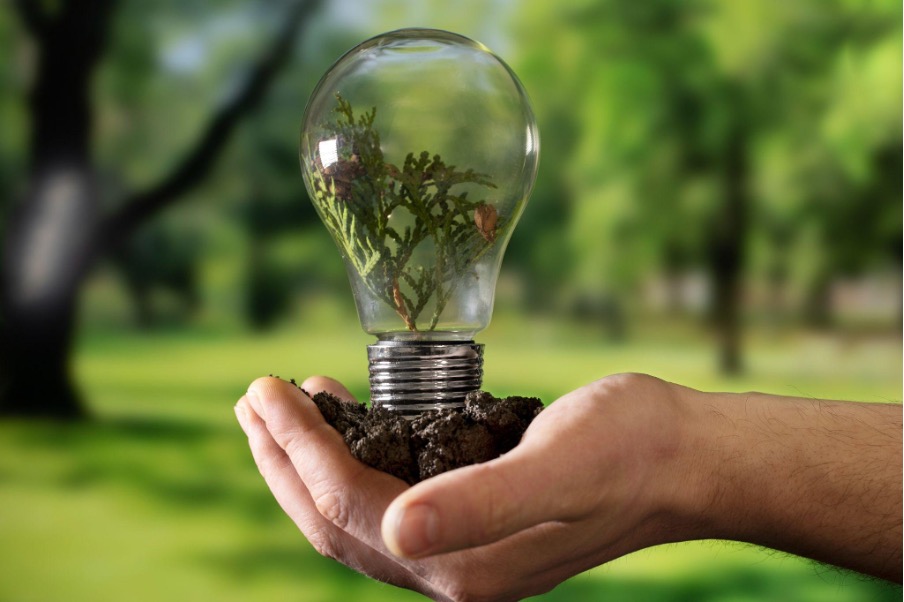Bioenergy which is another term for energy from organic materials, also known as biomass. Biomass can come from different sources which include plants, trees, agricultural residues, municipal solid waste, animal manure, sewage, and other organic material. Since during the combustion of biofuels, the same amount of carbon dioxide as is absorbed during plant growth is released, bioenergy is considered to be carbon neutral or even carbon negative.
There are several ways that biomass can be converted into useful bioenergy:
1. Combustion:
Organic sources fuels such as wood, agro-residue and industrial solid wastes can be fed directly into the boiler providing heat and electricity. That is referred to in power plants which are boiled and turbined with mechanical and electrical power through generators. Therefore, the steam formed by burning biomass causes the blades on the turbine to turn in such a way that the generator is powered by the electric current.
2. Gasification:
A mixture of hydrogen, carbon monoxide, methane and other gasses known as synthesis gas or “syngas” is sourced from the biomass heap and burnt in an oxygen starved mode. It can be burned as is for heat generation and electricity, or it can be refined into fuels and chemicals. Operations on gasification are more productive than direct combustion. Also, there is more scope to work with a wide range of feedstocks and products through gasification.
3. Pyrolysis:
Biomass is burned in an oxygen free atmosphere by creating a liquid bio-oil through the pyrolysis process; this is how production is done. The clean oil can be refined into diesels or jet fuels. Slow pyrolysis in addition has the ability to create biochars which are full of nutrients if they are deposited back on the land.
4. Anaerobic Digestion:
Bacteria decompose organic material such as sewages, manure and food waste in an oxygen-free environment to generate biogas. It has around 90% of carbon dioxide and methane, and can be used for various heat, power generation and vehicle fuel just like natural gas. Rich in nutrients, the remaining digestate after this process can function well as a fertilizer.
5. Fermentation:
One kind of the crops (corn, sugarcane and switchgrass) with a high amount of sugar and starchy content can be fermented by microorganisms and converted into ethanol. Furthermore, the ethanol is purified by distillation and consumed as a transportation fuel. Another way CO2 can be reduced is through capturing and reusing the CO2 produced during fermentation. The cellulosic ethanol uses enzymes to break up indigestible lignocellulose from sources like crop debris and wood waste in order to yield fermentable sugars.
Biomass energy, a renewable and environmental-friendly kind of energy made by the processes that transform waste and agricultural products into fuel, is being recommended across the globe. However, bioenergy does have some notable disadvantages that need to be considered:
- Competition with food crops: The main issue with agricultural bioenergy including corn, soybeans and sugarcane lies in the fact that it takes land and diverts it to biofuel production.
- High water usage: Indeed a lot of the biomass energy feedstocks are grown with large volumes of water for irrigation as well as the processing.
- Land use change and deforestation risks: The conversion of old forests, grasslands, and ecosystems into croplands for the production of bioenergy feedstocks promotes the loss and deterioration of habitats for living species.
- Air pollution from burning biomass: Whilst energy generation via organic streams of wastes enables these materials, which would otherwise decay and emit methane into the environment, combustion of solid biofuel often leads to the creation of air pollutants.
- High costs: Another obstacle of bioenergy that needs to be addressed is the economic viability. It is still competing with cheaper fossil fuels like coal and natural gas.
- Lifecycle GHG emissions concerns: From the perspective of bioenergy sources from plant materials, this is referred to as “carbon neutral” since the emission is absorbed by plants during growth and is released again when the energy is generated.
Conclusion
The conversion process can be no matter of it; still, the systems of bioenergy should be optimized according to the best use of resources, the good of the environment, food security and also the social well-being. The employment of sustainable methods such as the utilization of food waste to generate sustainable energy, bioenergy integration into food production, and applying nutrients back to the soil can aid in enhancing both environmental and social welfare outcomes. Bioenergy can be smartly planned and adopted with the policies to serve as a clean, renewable form of energy, substituting fossil fuels across many applications.
Overall, bioenergy has a clean alternative to the fossil fuels following the circular economy principles; yet, its sustainability in respect of food security, water resources, land use and biodiversity is an underlying matter to be accounted for. Policy instruments about sustainability and well-structured sustainability assurance systems should be in place if this bioenergy implementation is supposed to be guided on round social and ecological impact assessments. The principle ethics responsible approach makes it possible for bioenergy to fulfill all the predicted benefits.

